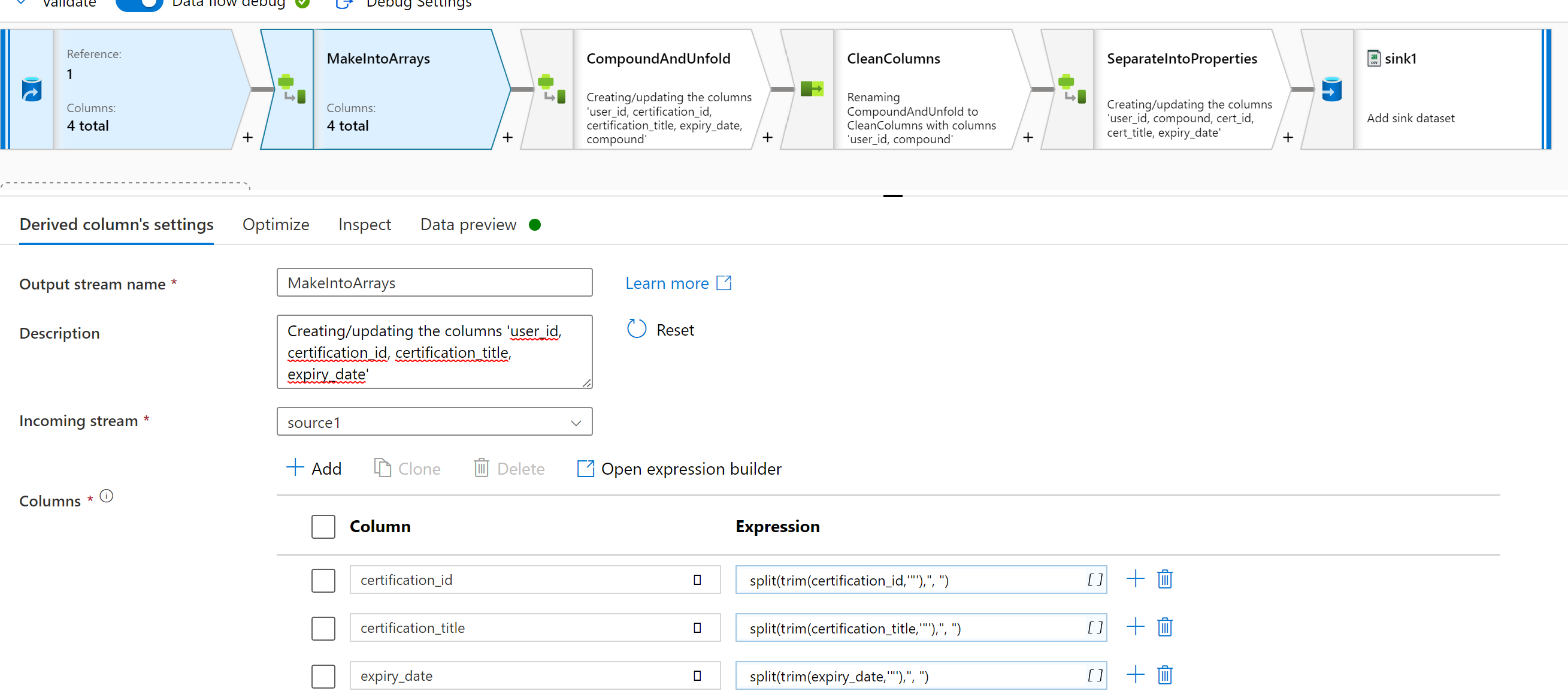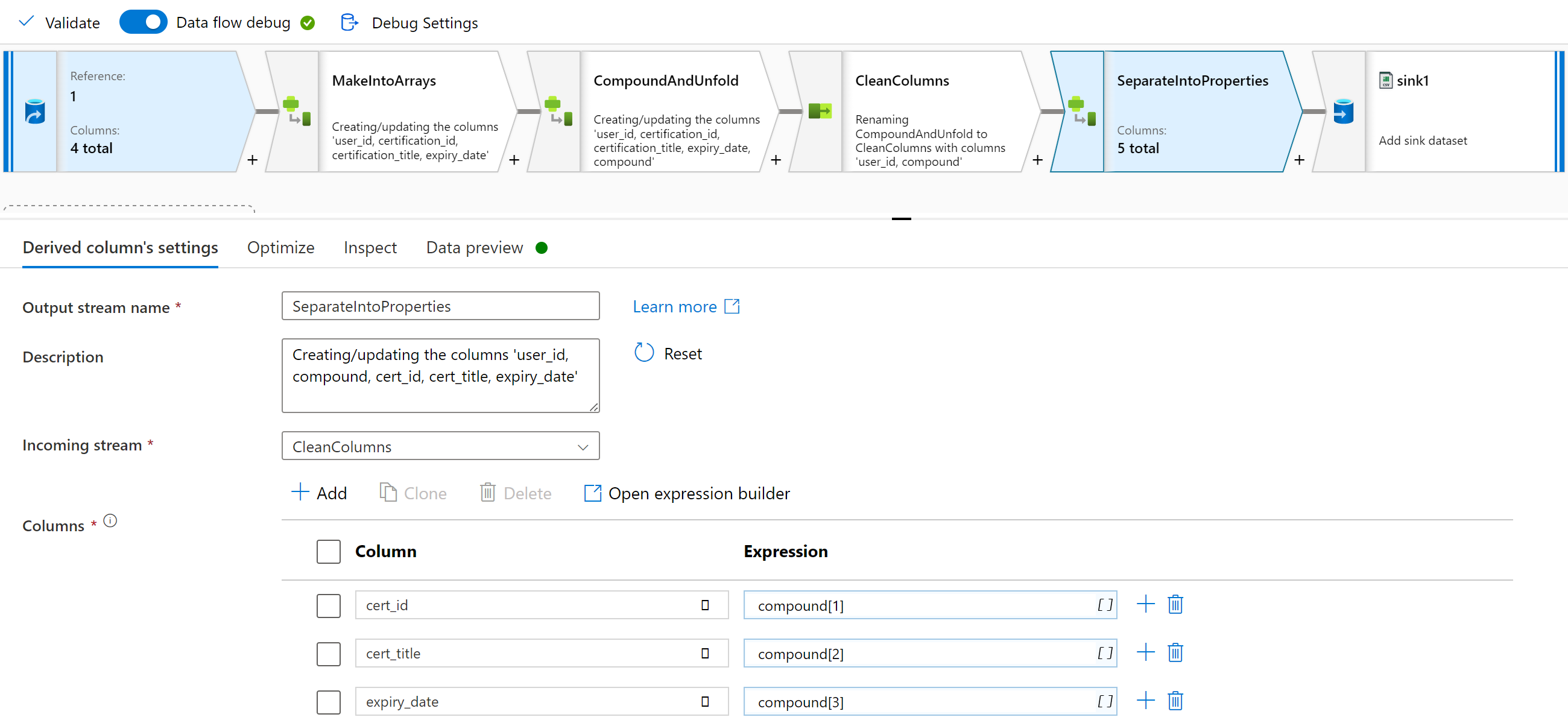Okay, I got it now @Anonymous !
Also, I found the blocker earlier; the space after the comma makes a difference! So putting space after the comma in delimiter took care of that.
Below I past the dataflow script. It works pretty much like I originally wanted.
source(output(
user_id as short,
certification_id as string,
certification_title as string,
expiry_date as string
),
useSchema: false,
allowSchemaDrift: true,
validateSchema: false,
ignoreNoFilesFound: false,
format: 'delimited',
container: 'input',
fileName: 'vasmi.csv',
columnDelimiter: ', ',
escapeChar: '',
quoteChar: '\"',
columnNamesAsHeader: true) ~> source1
source1 derive(certification_id = split(trim(certification_id,'"'),", "),
certification_title = split(trim(certification_title,'"'),", "),
expiry_date = split(trim(expiry_date,'"'),", ")) ~> MakeIntoArrays
MakeIntoArrays derive(compound = unfold(mapLoop(
size(certification_id),
array(certification_id[#index],certification_title[#index],expiry_date[#index])
))) ~> CompoundAndUnfold
CompoundAndUnfold select(mapColumn(
user_id,
compound
),
skipDuplicateMapInputs: true,
skipDuplicateMapOutputs: true) ~> CleanColumns
CleanColumns derive(cert_id = compound[1],
cert_title = compound[2],
expiry_date = compound[3]) ~> SeparateIntoProperties
SeparateIntoProperties sink(allowSchemaDrift: true,
validateSchema: false,
format: 'delimited',
fileSystem: 'data',
folderPath: 'out',
columnDelimiter: ',',
escapeChar: '\\',
quoteChar: '\"',
columnNamesAsHeader: true,
umask: 0022,
preCommands: [],
postCommands: [],
skipDuplicateMapInputs: true,
skipDuplicateMapOutputs: true,
mapColumn(
user_id,
cert_id,
cert_title,
expiry_date
)) ~> sink1

unfold(mapLoop(
size(certification_id),
array(certification_id[#index],certification_title[#index],expiry_date[#index])
))


 or upvote
or upvote  button whenever the information provided helps you. Original posters help the community find answers faster by identifying the correct answer. Here is
button whenever the information provided helps you. Original posters help the community find answers faster by identifying the correct answer. Here is